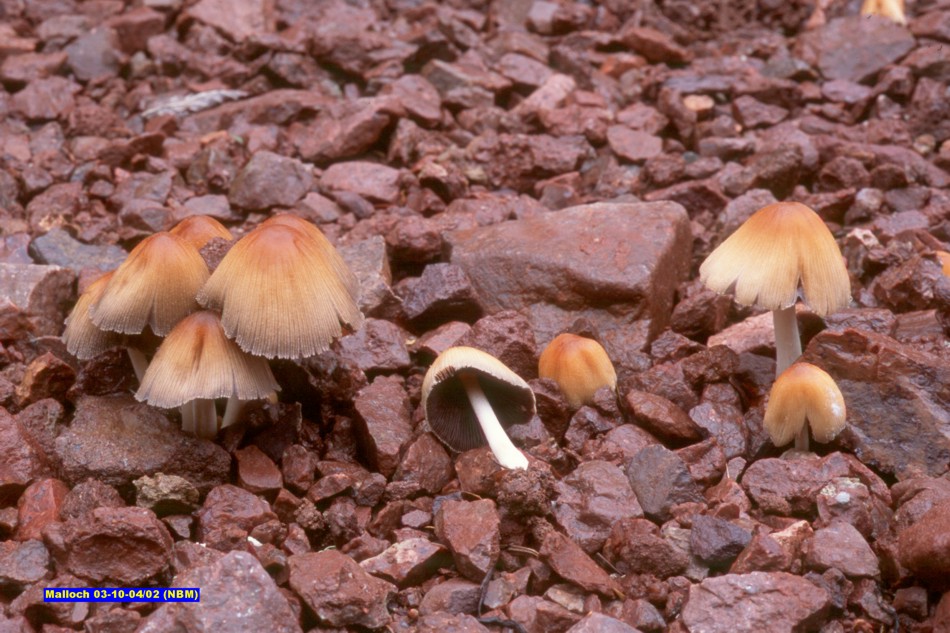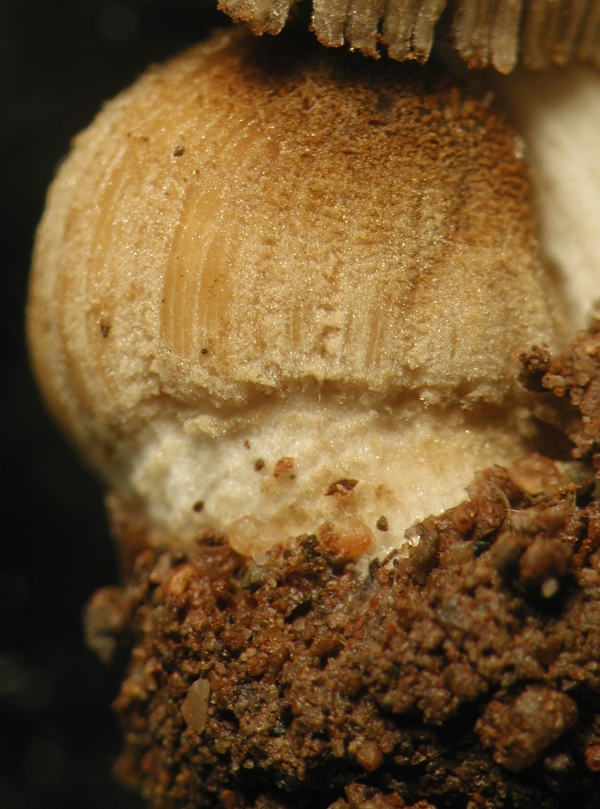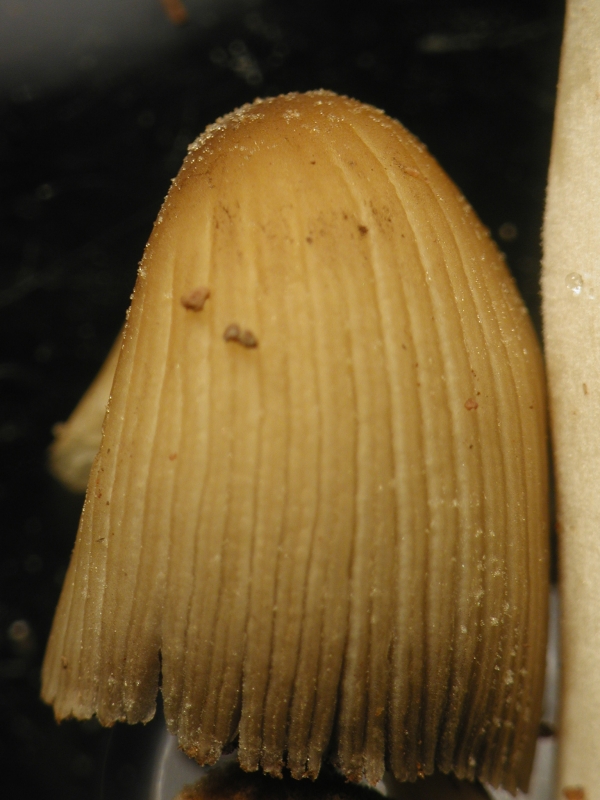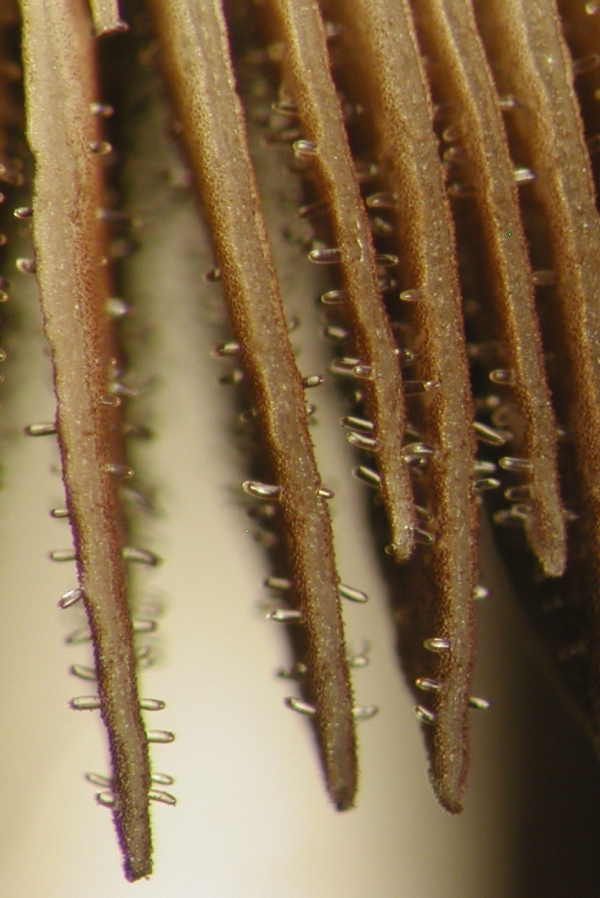Fleshy Fungi of New Brunswick >>
Coprinellusus micaceus
A Focus on Species >>
Coprinellus micaceus
Coprinellus micaceus Bull.:Fr.

Coprinellus micaceus is sometimes called the "Glistening inky-cap" because of the mealy granules found on young caps. The resemblance of these granules to small sparkling pieces of mica is the basis of its Latin name. The granules
are actually spherical cells that make up the universal veil of the young fruiting bodies. The universal veil itself is seen only in very young stages of fruiting body development where it covers both cap and stipe. Later, as the cap expands, the veil breaks up, leaving the granules as scattered particles. The veil material can be entirely washed off by rain.

The picture at right shows a very young fruiting body of C. micaceus. The universal veil appears as a thick mealy coating, especially at the top of the cap. Note that in some places the veil has been rubbed off by by the collector who may not have been careful enough when he handled the fruiting bodies in the field (mea culpa). The whitish tissue at the base of the fruiting body is the stipe, also covered by the universal veil.

This picture shows a fruiting body that is a little more expanded than the one above. Here the universal veil has been broken and is already nearly gone. Granules can be seen at the top of the cap and around the margin.
Like other species of Coprinellus, C. micaceus has gills that liquify at maturity during spore release. Liquification begins at the edge of the cap and gradually works toward the centre. As this happens the margin of the cap rolls back exposing and separating the gills further toward the top. At length (usually one day) the entire cap has liquified and nearly all of the spores have been released. Although most of the spores are discharged into the air some become trapped in the liquified tissues. The spores are black and cause the liquid to look like ink, hence the English name "inky-cap".

The peculiar manner of spore release in species of Coprinellus allows these fungi to pack their young gills much more closely together than most mushrooms. In spite of this the gills must be separated sufficiently to allow spore development. This separation is maintained by giant pleurocystidia that are dispersed among the basidia and extend out far enough to meet an adjacent gill and keep it from rubbing against the developing spores. In the picture at left a fruiting body of C. micaceus has been cut at the margin of the cap to expose a cross section of the gills. The large pleurocystidia can be seen as clear bottle-like objects protruding into the space between the gills. The spores are much smaller than the pleurocystidia and can only be seen in this picture as a reddish granularity on the surface of the gills.
Coprinellus micaceus is a common fungus throughout the temperate regions of the world. It decomposes wood, mainly that of hardwood trees, and is particularly common on wood buried in the ground. It may appear in large numbers on recently dead tree roots in lawns and gardens as well as in the woods.
Photo: D. Malloch